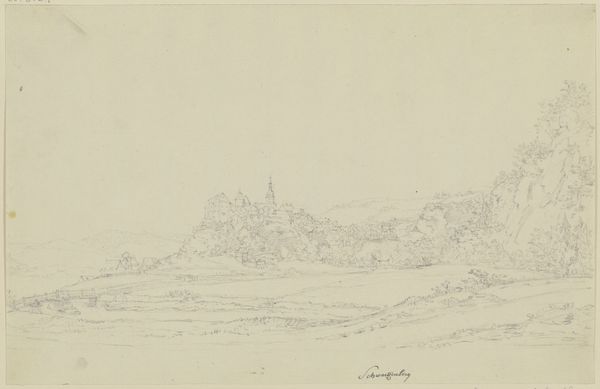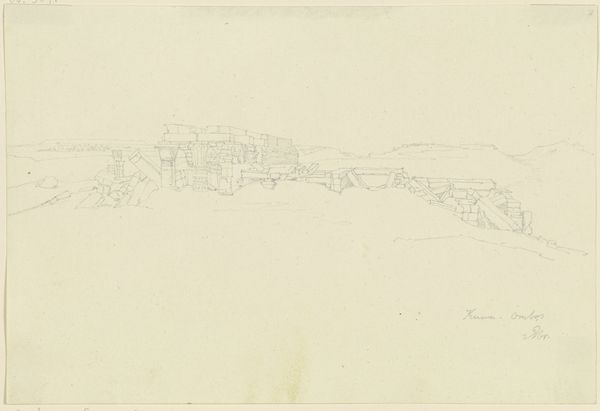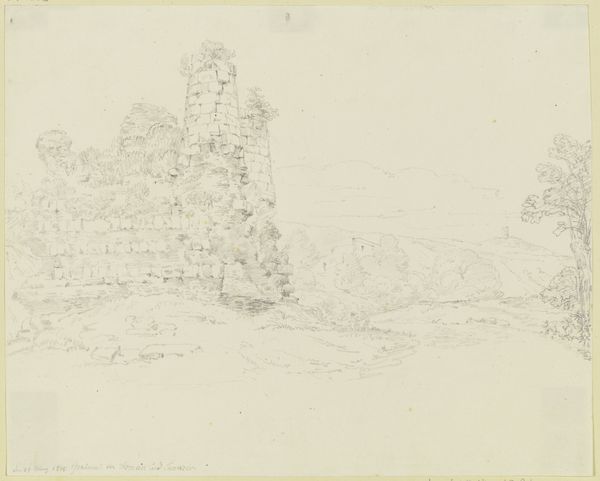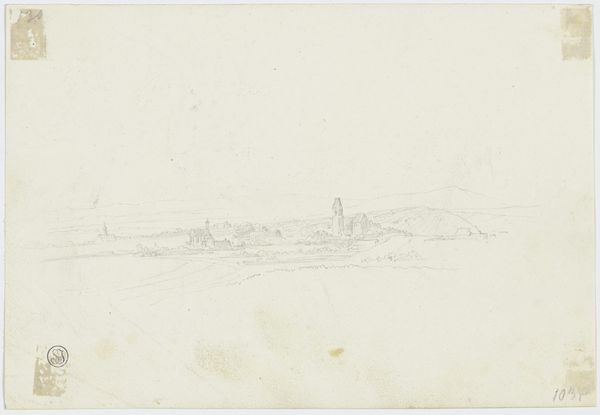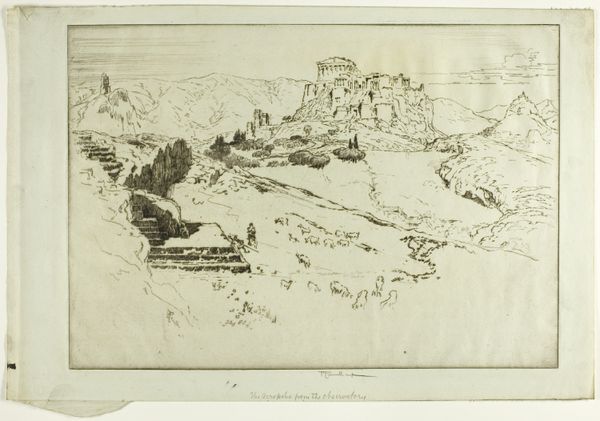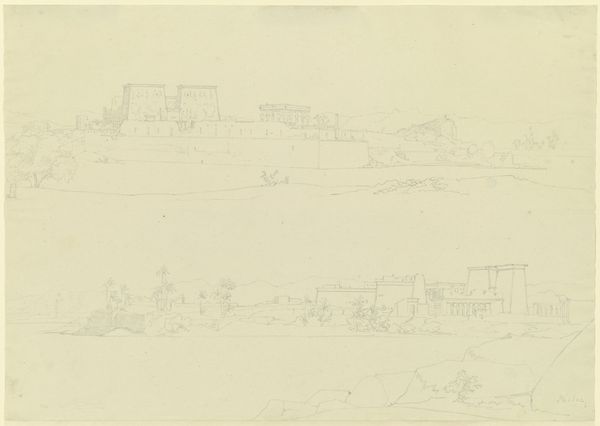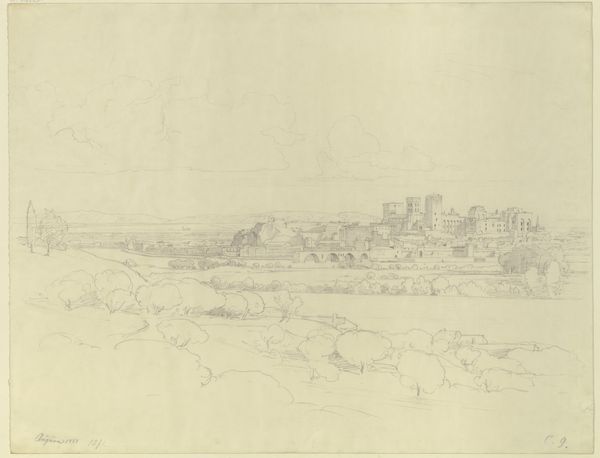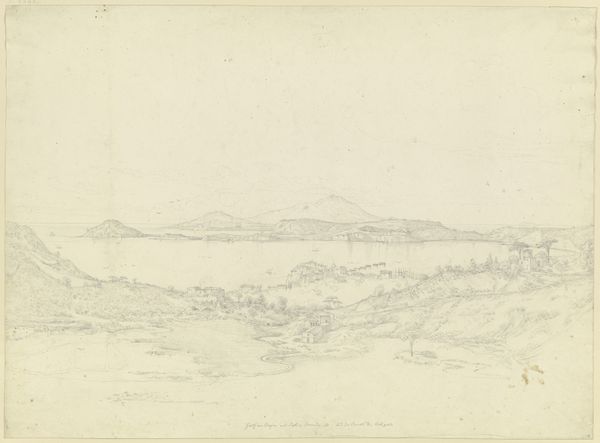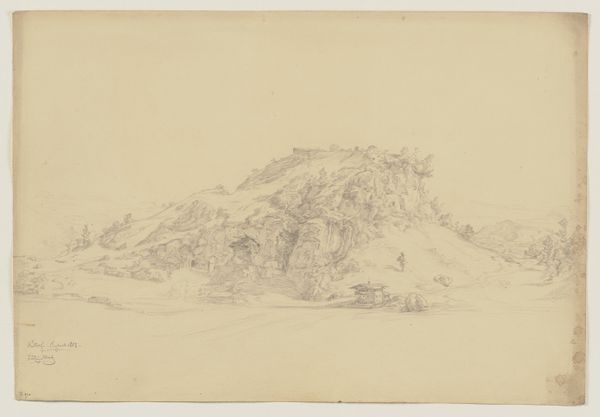
drawing, pencil
#
drawing
#
pencil sketch
#
landscape
#
etching
#
pencil
#
cityscape
Dimensions: height 178 mm, width 309 mm
Copyright: Rijks Museum: Open Domain
Curator: The delicacy of this drawing is striking, wouldn’t you agree? It's attributed to Gerard van der Horst, made sometime between 1610 and 1628. It's titled "Hohenems en de Habsburg." Editor: Indeed, it possesses a haunting quality, like a fading memory etched in pencil. The almost ghostly outlines of those hilltop castles… what were the sociopolitical dynamics in play during its creation? Curator: The means of production here are quite direct—pencil on paper. It speaks to a kind of immediacy. There’s little to mediate between the artist’s vision and the paper, the lines are very thin. This was obviously not made to be imposing, like many large formal pieces in the history of aristocratic family displays. Editor: It really reflects broader themes of power, lineage, and the visualization of territories in early modern Europe. Look closely at the strategic positioning of Hohenems; it's presented in the drawing, perhaps a claim, maybe to visualize some aspiration to sovereignty of the Habsburg empire. What's interesting here, looking beyond a depiction of land, is a political and historical perspective, because of its time. It isn’t just land: it’s belonging. Curator: Absolutely. And thinking materially, landscape drawing at the time also often was connected to architectural projects. It allowed potential owners or sponsors to think through building. Looking at it more closely you can see different additions—almost pasted into place at slightly different scales—showing, I think, a plan of how to realize this family’s presence within the topography and building culture of the land. It is as if we are in an architects' workshop as well. Editor: I wonder about access: who got to view these images, what circles they moved in, and how gender roles may have been embedded in landscape artistic depictions and reception. Considering also labor, whose hands physically crafted these hilltop citadels in the first place? Did that impact this rendering, who he decided to elevate with inclusion into this vista? It calls us to ponder art’s inherent role within historical power imbalances. Curator: I agree completely. In these almost casual details is evidence for all of your questions. Examining those processes is revealing when trying to read this beautiful, but at first glance unassuming work. Editor: I will now look at these simple, material, pencil lines with completely new eyes—asking questions, looking for voices unheard within this piece.
Comments
No comments
Be the first to comment and join the conversation on the ultimate creative platform.

